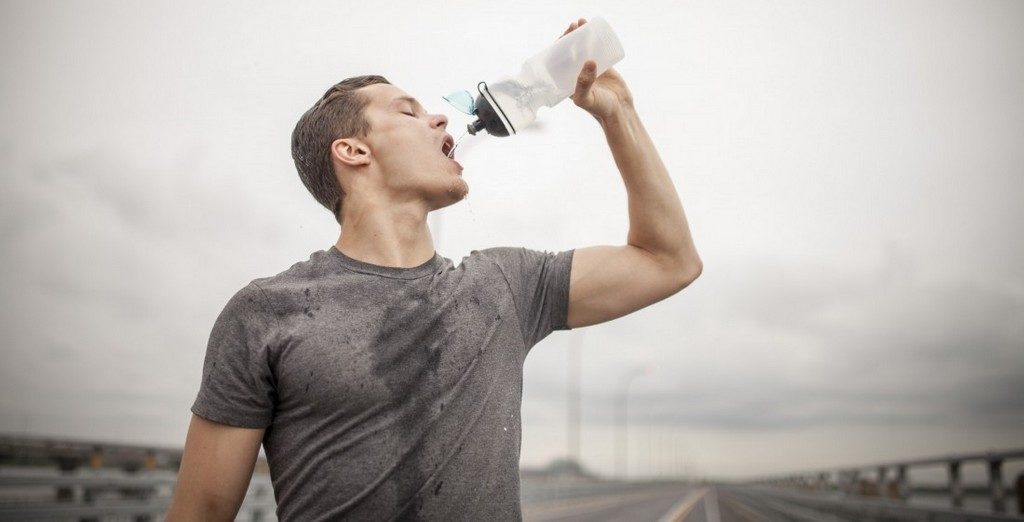Your body is like a thermostat: It’s constantly working to regulate your temperature, making sure you don’t get too hot or too cold. It usually does a pretty good job of staying as close to 98.6 degrees Fahrenheit as possible (obviously way higher than the thermostat in your home), but on particularly hot and humid days, it’s possible that it could malfunction.
When that number outside rises, your body has to work extra hard to maintain a healthy internal temperature, which can make it go a bit haywire, potentially resulting in heat exhaustion or heat stroke. Heat-related illnesses usually strike people who are doing physical activity outdoors, the elderly, and those on medications that increase their sensitivity to high temperatures. But you don’t have to be in a high risk category to suffer from these major summer health hazards.
We asked a doctor to explain the difference between heat stroke and heat exhaustion, and how you can recognize the warning signs of each.
What is heat exhaustion?
Heat exhaustion occurs when the body’s core temperature is less than 104 degrees Fahrenheit, but blood pressure is low and the heart isn’t pumping blood as efficiently as usual, Peter Shearer, MD, emergency physician and chief medical officer at Mount Sinai Brooklyn, tells Health.
Symptoms of heat exhaustion include heavy sweating, cold skin, fast but weak pulse, nausea, vomiting, muscle cramps, dizziness, headache, weakness, and fainting. “Your body is having a normal response to an abnormal situation,” Dr. Shearer says.
If you think you might have heat exhaustion, move to a cool place, take off as many pieces of clothing as you can, put cool wet cloths on your body or take a cool bath, and sip water. “Many people with heat exhaustion don’t need to go to the hospital,” Dr. Shearer says. However, if you’re throwing up, your symptoms are getting worse, or your symptoms last more than an hour, get medical help.
Heat exhaustion doesn’t necessarily lead to heat stroke, but if you don’t address your symptoms, it certainly could.
What is heat stroke?
Heat stroke is a more severe form of heat illness. In fact, it’s a medical emergency. It occurs when your body temperature rises to a point (usually above 104 degrees Fahrenheit) where the central nervous system malfunctions and the body loses the ability to thermoregulate. In this case, “your body responds abnormally to an abnormal situation,” Dr. Shearer says.

Symptoms to be aware of include hot and dry skin, fast and strong pulse, headache, dizziness, nausea, confusion, and loss of consciousness.
Anyone experiencing heat stroke should get to a hospital right away. If not treated promptly, the extreme body temperature can cause cell death, resulting in permanent organ damage.
Dr. Shearer says the body temperature needs to be lowered as quickly as possible, so until the person gets to the hospital, they should move to a cool place, remove clothing, sit by a fan, and apply cool cloths. Doctors may treat heat stroke by immersing the patient in cold water, using cooling blankets and ice packs, and administering IV fluids to rehydrate the body.
How can I prevent heat illness?

First things first, be sure to drink a lot of water when doing physical activity in the heat. If you notice your urine is a dark yellow or your muscles start to cramp, you need to be drinking more fluids, Dr. Shearer says.
You should also wear loose and lightweight clothing, apply sunscreen generously (sunburn affects your body’s ability to cool itself), be aware of any medications you’re taking that increase your sensitivity to high temperatures, try to exercise in the morning or evening to avoid peak heat, and refrain from doing physical activity on the hottest days of summer.
